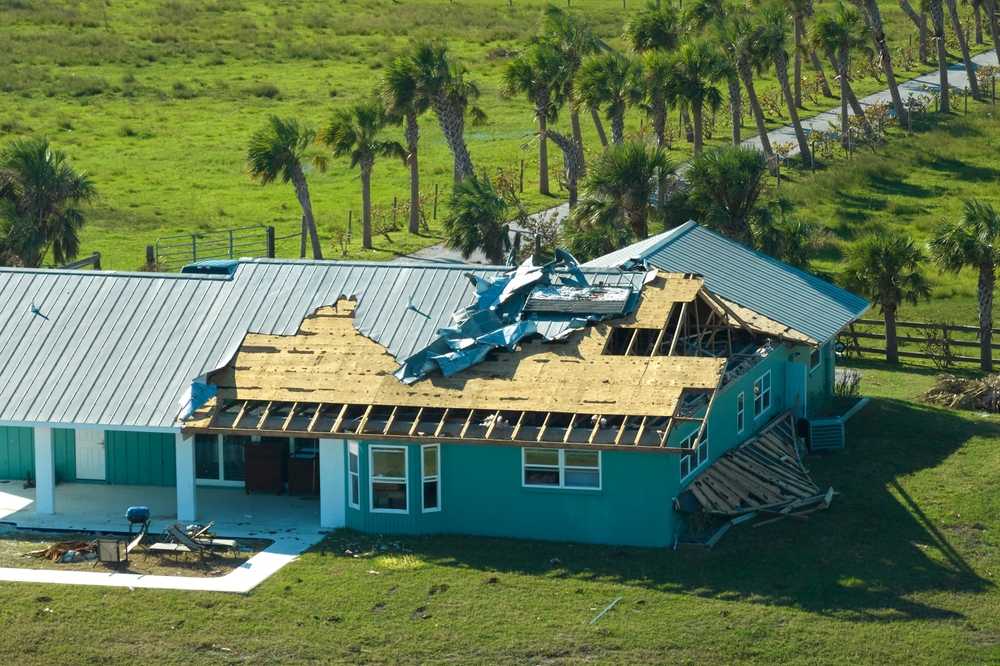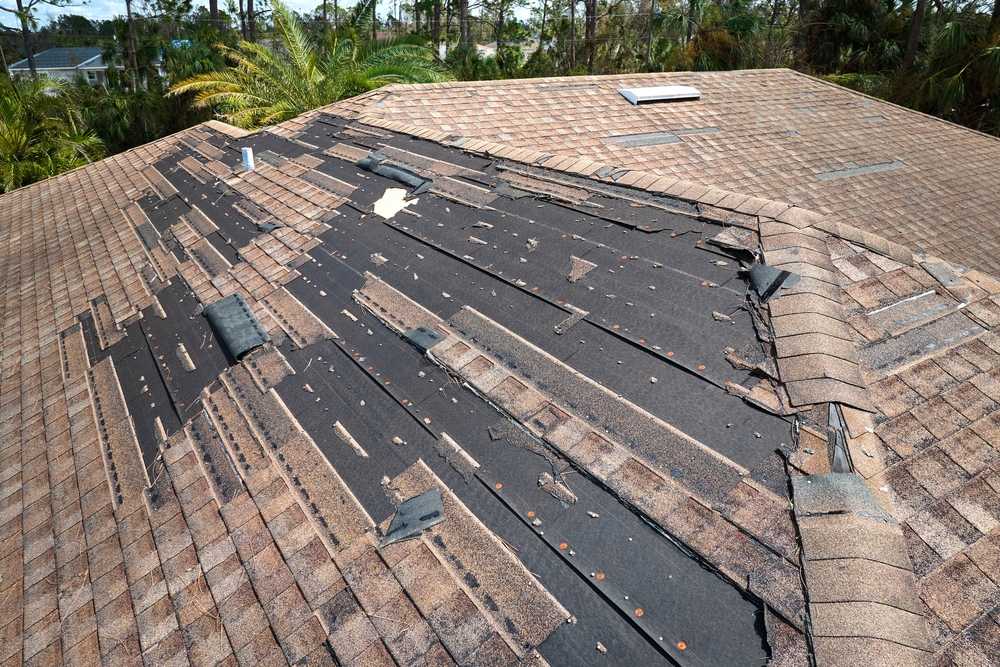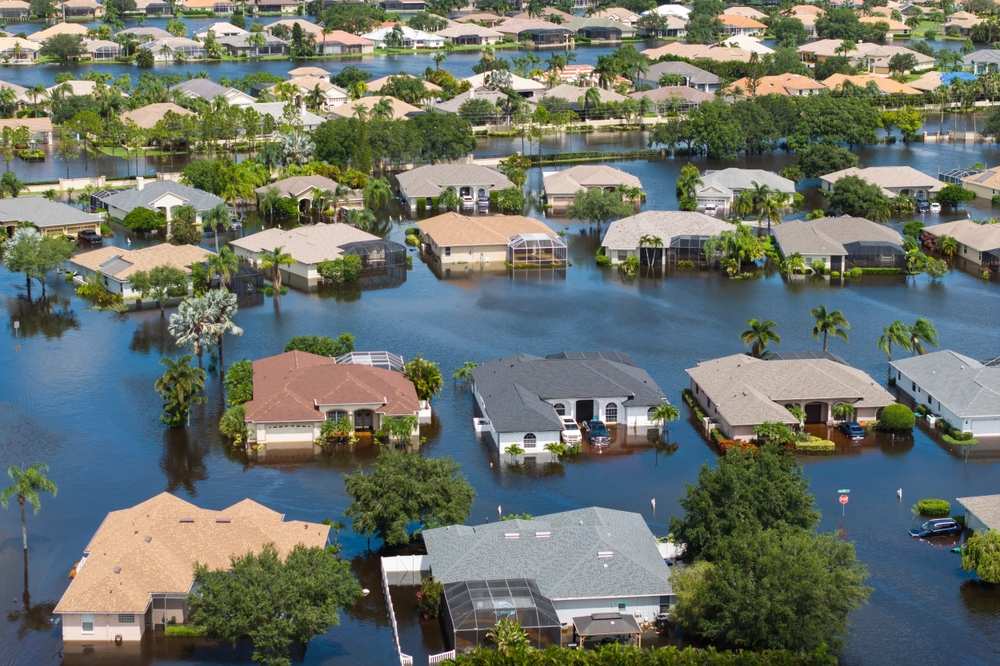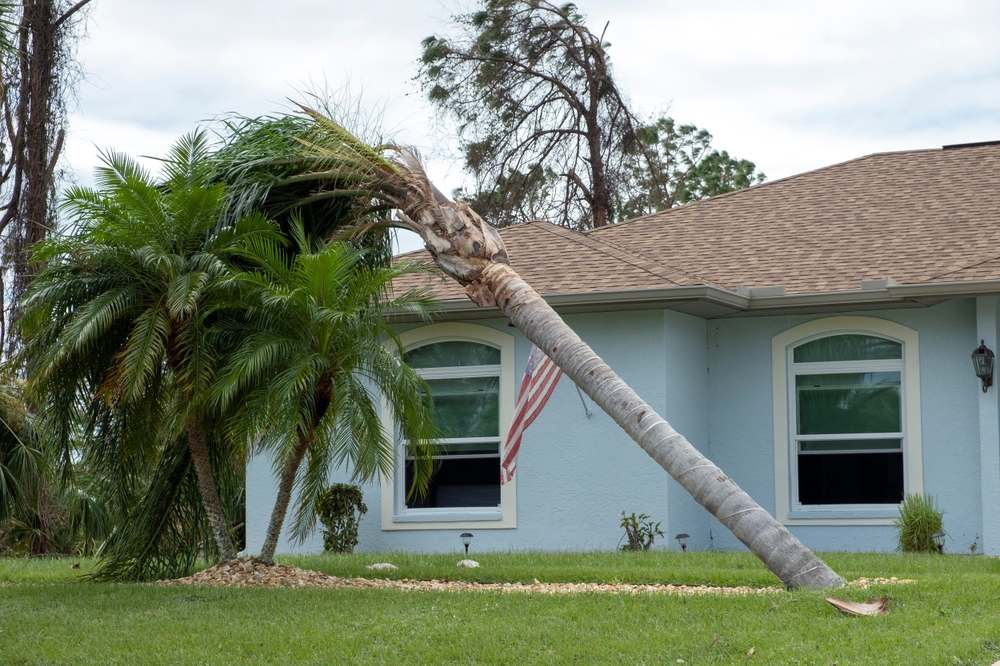TLDR: Signs of Hurricane Roof Damage
- Check for missing shingles, dents, or water leaks after a storm
- Schedule a professional roof inspection ASAP
- Document damage for your insurance claim
- Repair or replace your roof to protect your home
- Act quickly to avoid long-term water damage and costs
Hurricanes are among the most powerful and destructive weather events homeowners can face. When one strikes, your roof takes the brunt of it, enduring high winds, flying debris, and torrential rain. Knowing how to spot hurricane roof damage quickly can make all the difference in preventing further water damage and protecting your home.
This guide walks you through the common signs of roof damage from a hurricane, how to safely inspect your roof, what to do if you find a damaged roof from a hurricane, and how to navigate the insurance claim process.
Why Roof Damage After a Hurricane Is So Common
Your roof is your home’s first line of defense, but it’s also one of the most vulnerable parts during a storm. Roof hurricane damage can occur when:
- Roof material, like shingles or tiles, is lifted or torn off by high winds
- Tree limbs or flying debris strike the roof
- Water infiltrates through weak points, leading to hidden water damage
Even minor issues can escalate quickly, which is why a roof inspection is critical after a hurricane.
Common Signs of Hurricane Roof Damage
You don’t have to be a roofing expert to identify red flags. After a storm, be on the lookout for these signs of hurricane damage roof problems:
1. Missing or Damaged Shingles
High winds can easily rip off shingles, especially if they were already loose. Look for bare spots, curling edges, or shingles scattered in your yard.
2. Water Leaks and Stains
Water leaks inside your home, especially in the ceilings or near walls, often indicate that the roof deck has been compromised. Water stains, mold, or bubbling paint are red flags.
3. Sagging or Uneven Roof Areas
Warped or sunken areas suggest trapped moisture beneath the surface—a serious sign of significant damage that could lead to structural problems.
4. Debris Piles or Broken Tree Limbs
Heavy tree limbs landing on your roof can cause both visible and hidden damage. Look for dents, cracks, or impact marks.
5. Loose Flashing or Fascia
Strong winds often loosen the metal trim and flashing around chimneys, vents, and skylights. Damaged flashing can allow water to seep in around these vulnerable points.
How to Inspect Your Roof Safely
After a hurricane, your first instinct may be to climb up and take a look, but safety must come first. Instead, follow these steps:
Exterior Walk-Around:
- Check from the ground with binoculars or a drone, if available
- Look for missing shingles, cracked tiles, and loose flashing
- Take note of any fallen branches or visible holes
Interior Checks:
- Examine ceilings and attic spaces for signs of water leaks
- Use a flashlight to inspect the roof deck for dampness or staining
If you suspect roof damage from a hurricane, call a professional roof inspector rather than attempting risky DIY assessments.
What to Do If Your Roof Is Damaged
If your roof is damaged after a hurricane, acting quickly is essential to prevent more issues. Here’s a simple action plan:
1. Cover Exposed Areas
Use a tarp to protect the area temporarily. This minimizes additional water damage while you arrange for repairs.
2. Document Everything
Take clear, detailed photos of the damaged roof from the hurricane, both inside and out. This documentation is vital for your insurance claim.
3. Contact a Professional Roofer
A licensed contractor can provide a full roof inspection, help you estimate the cost of roof repair or roof replacement, and support your claim process.
4. Call Your Insurance Company
Start your homeowners insurance claim process promptly. Most policies cover hurricane roof damage, but waiting too long could affect eligibility.

Roof Repair vs. Roof Replacement: What’s the Difference?
Not all roof hurricane damage requires a full roof replacement. A reputable roofer will help you determine:
- Whether the roof material is still structurally sound
- How widespread the damage is
- If the age of the roof justifies a full replacement
Roof repair might involve replacing shingles, sealing holes, or reinforcing weakened areas. In contrast, a roof replacement means installing an entirely new roofing system.
How Insurance Companies Handle Hurricane Roof Damage
Navigating your insurance claim for roof damage after a hurricane can be stressful, but knowing what to expect helps.
Tips for a Smooth Claim Process:
- Notify your insurer as soon as damage is discovered
- Provide before-and-after photos if possible
- Keep receipts for temporary repairs or professional assessments
Your homeowners’ insurance adjuster will inspect the property to confirm the extent of your roof hurricane damage and determine coverage based on your policy.
Some insurers may offer full or partial reimbursement for:
- Emergency tarping
- Cost of roof repair or roof replacement
- Interior water damage linked to roof failure
How to Protect Your Roof Before the Next Hurricane
Preventing future hurricane damage roof issues starts with preparation. Here’s what you can do:
Seasonal Maintenance:
- Schedule regular roof inspections before and after hurricane season
- Clean gutters to prevent water buildup
- Trim back trees to reduce the chance of falling tree limbs
Upgrade Materials:
- Use impact-resistant shingles or metal roofing
- Reinforce your roof with hurricane straps or clips
- Secure roof vents and skylights with storm-rated coverings
These steps will help protect your roof and minimize costly repairs down the road.
The Bottom Line
Hurricane roof damage is a reality for many homeowners in coastal regions. From torn shingles to hidden leaks, the signs may not always be obvious, but the consequences can be devastating.
By learning how to recognize the warning signs of roof damage after a hurricane, taking action quickly, and knowing how to handle the insurance claim process, you can reduce stress and expense.
Whether you need a quick roof repair or a full roof replacement, partnering with a qualified roofer ensures your home stays protected when the next storm arrives.
Don’t wait until it’s too late. Inspect your roof, reinforce weak spots, and make a plan today to protect your home tomorrow.



